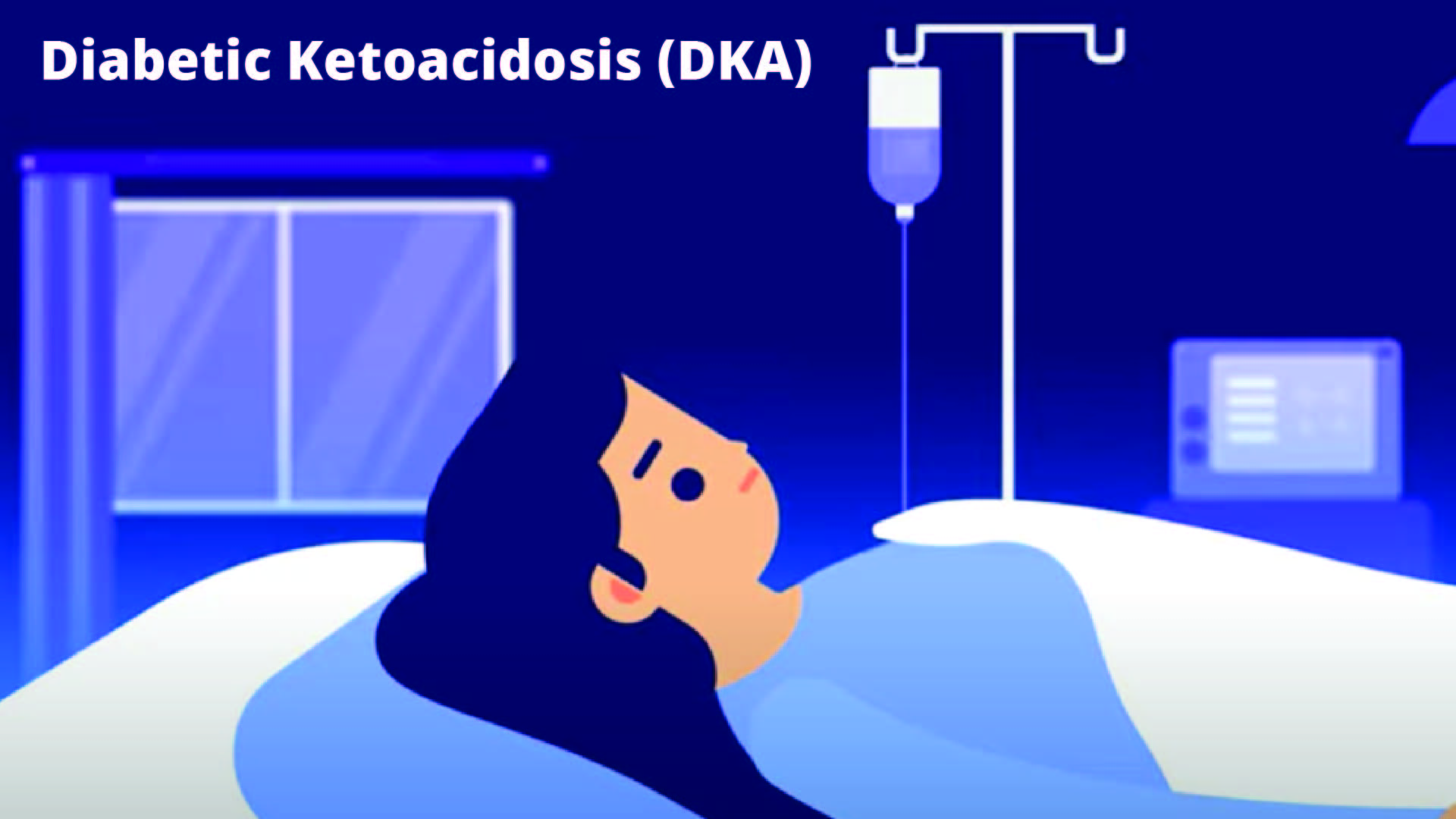Every Doctor has regrettable memories about some patients whom they weren’t able to save. For similar reasons, Diabetic Ketoacidosis or DKA is a medical emergency that I never take lightly. This is the story of a 17 years old girl with Diabetic Keto Acidosis. This is how we were able to save her after an intense battle against the disease.
Table of Contents
Symptoms of Ketoacidosis
She presented to us with impaired consciousness. She had had excessive thirst, frequent urination & vomiting over the past few days. We had a few differential diagnoses at first. But only one was left when the mother told us about her daughter’s type 1 diabetic condition. This was a classical presentation of Diabetic Keto-Acidosis.
Her breathing was rapid and shallow. This was compatible with the Kussmaul breathing pattern seen in Severe Acidosis. Severe Dehydration was able to explain the marginal blood pressure of 90/60. Following catheterization, she produced only 10ml of urine in the first hour! This made us worried because low urine output indicates a poor prognosis.
Diagnosing DKA
To establish the Diagnosis, we needed to test her for elevated blood sugar, Ketone-bodies, and Acidosis.
- In the absence of Insulin, the liver breaks down Glycogen into Glucose. We detected hyperglycemia with a simple glucometer. Her capillary blood glucose level was 400 mg per deciliter, a value compatible for Diabetic Keto Acidosis.
- As glucose is filtered into Urine, water and electrolytes are dragged with it. This leads to the infamous Dehydration associated with the disease. Urine output declines in severe dehydration.

Detecting Ketone Bodies.
- We had a Portable Ketone Meter, which allowed us to measure the serum Ketone body levels with a simple finger prick. The reading showed a dangerous level of Ketone bodies of 3.2mmol/dl.
- Just to be sure, we also sent her urine to test for ketone bodies, though its time taking and found to be less sensitive.
- Glucose is the body’s number one energy fuel. Since Glucose utilization is impaired in diabetes, the body breaks down fat and produces the alternative Fuel KETONE BODIES.
- The fruity smell in exhaled air of DKA patients is caused by these Ketone Bodies.
Detecting Acidosis.
- The Normal Ph Value of the blood ranges from 7.35 to 7.45. any value below this range indicates Acidosis in the blood. The massive buildup of Ketone bodies in DKA makes the blood highly Acidic.
- We can measure the Ph Value of blood using a blood gas analysis. I located her radial artery, and drew blood to an ABG syringe, and performed a blood gas analysis. The Ph value of this girl came as 7.21. The anion gap had increased due to excess Ketone bodies.
- The blood gas analysis was compatible with Moderate Diabetic Keto-Acidosis.
- In an attempt to compensate for the acidosis created by Ketone Bodies, the lungs start to hyperventilate to remove Carbon Dioxide. This is clinically observed as Kussmaul Breathing.
How do we treat DKA?
Initial therapy
- Due to the marginal blood pressure and reduced urine output, we started fluid therapy with a bolus of IV Normal Saline, followed up by an infusion at a rate of 20ml per kilogram bodyweight per hour. After three hours, we gradually decreased the fluid rate.
- An insulin pump was used to deliver regular Insulin at a rate of 0.1 units per kilogram body weight. Insulin therapy can cause Hypokalemia. KCL was carefully added to Normal Saline, by frequently monitoring serum potassium levels.
Why does Rapid correction of glucose level cause cerebral Edema in Diabetic Ketoacidosis (DKA)?
- Glucose is Hypertonic. Therefore, blood is significantly Hyperosmolar in DKA patients.
- As you already know water travels from a place of Low Osmolarity to a place of High Osmolarity.
- If we rapidly correct the glucose level, osmolarity drops rapidly in the blood.
- Therefore, fluid shifts Extracellular space (plasma & interstitial space) to the Intra-cellular space of the brain.
- This cellular swelling leads to the infamous cerebral edema in Diabetic Ketoacidosis.
- That is the reason we aim for slow correction of glucose, once the plasma glucose level approaches 200mg/dl.
- When the plasma glucose approached 200mg/dl, we reduced the rate of insulin infusion and also changed the Normal Saline to 5% dextrose. These steps are essential to prevent Cerebral edema.

Treating the Etiology
Then she was transferred to an ICU where the therapy was continued until her acidosis, ketosis, and glucose levels were corrected. Later it was found that her DKA was triggered by a Urinary Tract Infection. It was successfully treated with IV ciprofloxacin.
